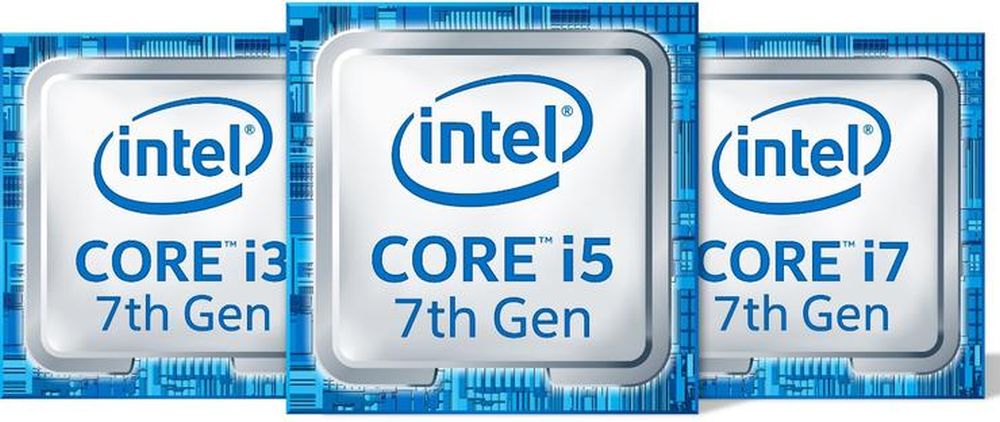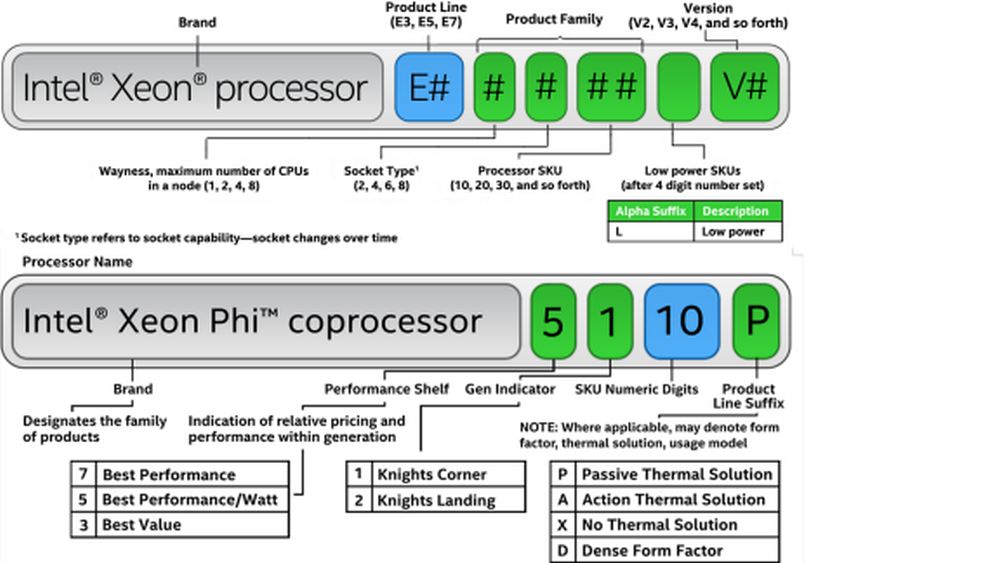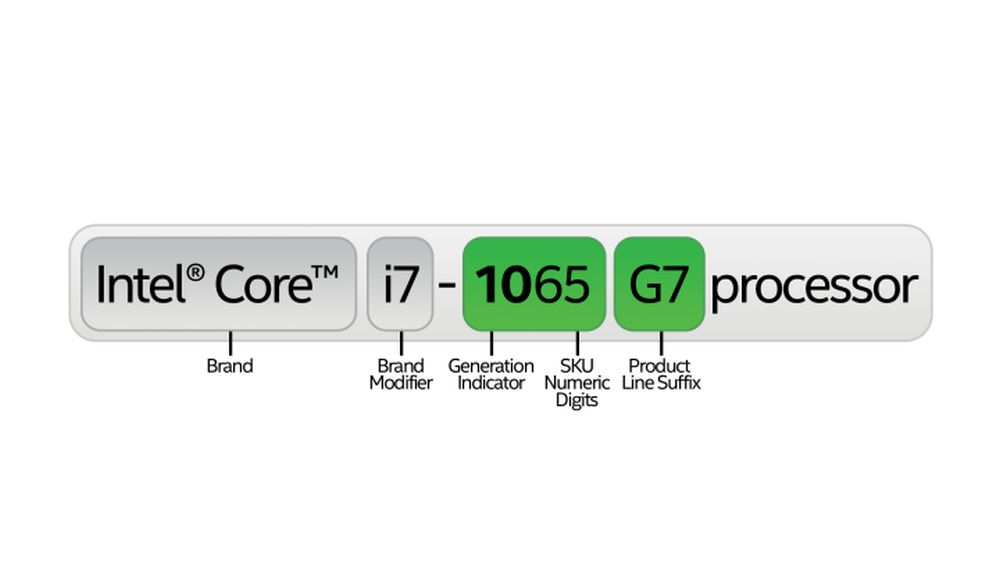The naming of Intel CPUs, from the most recent to the oldest, has been a bit of a mystery. In the past, there were some nice little jokes that Intel used to make about their naming of the chips, such as naming the top of the line chips “Clarkson” and the bottom of the line “Boeing”. But, since Intel started making marketing videos, the naming has become rather meaningless.
It’s not new news that Intel has its own naming scheme for its modern CPU/processors. But what is it? Why Intel? What is the history of this naming scheme? How far back does it date? And what are the names for the latest Intel CPUs? In this article, we’re going to explain this Intel naming scheme in detail, with a clear timeline of how Intel got to where it is today. By the end of this article, you’ll know everything you need to know to decipher Intel’s CPU/processor naming scheme.
You won’t be surprised to learn that a CPU is not called “Intel CPU” but rather “Intel processor” or “Intel microprocessor”. The word “processor” is short for “processor”, and now you know why. If you’re still confused by the name, you’re not alone. It’s a bit confusing, but a professor once told me that the naming scheme is a way of helping someone understand a CPU’s purpose in the world.. Read more about intel processors list by generation and let us know what you think.Latest update: 4. June 2024 at 12:11 When you are looking for a new laptop, the processor is usually the first thing you look at in terms of specifications. Frankly, the names of Intel processors can be confusing. What do the names, letters, and numbers of Intel processors mean? In this article, we examine Intel’s naming scheme and conventions for two processors commonly used in laptops: the Intel Core I series and the Intel Xeon processors. Here’s everything you need to know about the meaning of the letters and numbers of Intel processors.
Intel Core processors with explanation
It is very important to understand the names of Intel processors. Because it has to do with the processing power of your computer or laptop.
Intel Core I Series
Intel Core I series names

Core I processors are the most common and popular processors built into laptops and desktops. There are Intel Core i3, Core i5, Core i7 and Core i9 processors. The Intel Core i3 can be found in many cheap and economical laptops. Due to its low processing power, it can only handle daily tasks. This is the best processor if you need something cheap and for everyday use.
His computing power is visible in his suffix letter. The Core i5 is more powerful than the Core i3 and can handle tasks that require a lot of processing power. These processors are sometimes found in mid-range gaming and laptops. The Core i7 is the second most powerful processor in the Core I series. Core i7 processors are found in high-end laptops and are the most popular when it comes to finding a laptop for professional use. The Core i9 is designed for heavy duty applications and more. They have the highest clock speed of the Core I series and the most powerful processor.
What do the letters Intel stand for?

Not all Core i3, i5 and i7 processors are the same. Core I series processors have different suffixes that indicate their processing power. Find out what the suffixes on Core I series processors mean. Explanation of the letters of the Intel processor The letter U stands for ultra-low power processors. They consume less power and have a low clock frequency. They also work at high temperatures. U-processors are often found in many laptops, especially those that are thin and light. Because of their slim, elegant design and their tendency not to produce much heat, they are usually equipped with U processors.
H is available in three versions – H, HK and HQ. Both processors are powerful, have high power requirements and a high clock speed. They are also subject to overheating when high processing power is required. H-processors are four or six cores. Core i5 processors with the suffix H are quad-core and Core i7 processors are six-core. Laptops with HK are unlocked. Unlocked in the sense that it can be overclocked. The HQ suffix indicates a powerful quad-core processor. If you see a Core I series that ends in H, HK, or HQ. It is a high performance processor that can be overclocked. IntelProcessor Letter Meaning The letter G stands for High Performance Processors. They consume a lot of power, run hot and have a high clock speed. What makes them so special is that they are equipped with powerful, discrete graphics cards from AMD. To be exact, the AMD Radeon Vega graphics card. H processors typically come with separate NVIDIA graphics cards. This is what sets G. apart. The letter Y stands for Very-Ultra-Low processors, even lower than the U. This is an energy-efficient processor that does not overheat. Ultra-thin and thin laptops are equipped with Y processors. The letter T stands for low-power processors.
T-processors consume a lot of power and have a high clock speed compared to U-processors. They lie somewhere between U and H. They’re also rare. Only a few laptops are equipped with T-processors. The K model supports overclocking. The letter F means no integrated graphics card. Processors with the letter M are mobile processors. These processors are often found in older Lenovo ThinkPad models. When M processors become quad-core, they become MQ. The letter X stands for powerful processors. It’s either X or XE, where E stands for extreme. These processors are necessary if you plan to work with computing power. Games, virtual reality, music production, 4K and 360 degree video editing. Call it what you want. Anything that requires a lot of processing power and cores. Intel Core processors with the suffix X are capable of this. They are also the most expensive.
Intel CoreProcessor number values

Every Intel processor has numbers. The three digits before the suffix letter are the Stock Keeping Unit (SKU) digits, which also contain information on processing power. So the Intel Core i5-8350U processor is of the 8th generation. According to Userbenchmark, the 8th-generation Intel Core i5-8250U – where 350 is the numeric SKU – is eight percent more powerful than the 8th-generation Intel Core i5-8250U. Intelprocessor numeric values The same goes for the 8th generation processors. Intel Core i7-8750H and Intel Core i7-8850H generation. This comparison only works when comparing two processors of the same generation and with the same processor name.
Intel CoreProcessor Generations
The generations of Intel Core processors are a good way to quickly determine the quality of a particular processor. The latest generations of Intel processors will always be faster and better than previous generations. According to Userbenchmark, the i7-8550U is the 8th largest processor. The 7th generation i7-7500U is 22% faster than the previous i7-7500U. Generation. If you are buying a new laptop, always choose the latest generation. But how do I know what generation my Intel processor is?
Some specifications are kind enough to tell you the generation of the processor, others are not. Unless otherwise specified, the first number always indicates the generation of the Intel processor. For example, the i7-7500U processor is a 7th generation processor. The symbol 7 in the 7500U model means that it belongs to the seventh generation. So if you have an i5-11300H, 11 in 11300H means it’s an 11th generation high performance processor. Generation.
To check the Intel CPU generation on a laptop
Here is how to check which generation of processor is installed in your laptop.
for Windows
Press the Windows + R keys. Type dxdiag into RUN and press OPEN. dxdiag dialog box The dxdiag dialog box opens. In the SYSTEM tab, locate the processor. You will then see what processor and generation your laptop has. My processor is an Intel Core i5-5200U, where the 5 in 5200U means it is a fifth generation processor.
Intel Xeon processors Note

Intel Xeon processors are not intended for the consumer market, but are optimized for 3D modeling, rendering, CAD work, and high-performance tasks. They are designed to withstand prolonged stress without choking.
Intel Xeon processor name Value
The names of Intel Xeon processors are slightly different from those of Intel Core processors. The Intel Core I series comes in i3, i5 and i7. The Intel Xeon is available as E, E3, E5 and E7. Intel Xeon E processors are available in quad-core and six-core versions. Intel Xeon E3 processors are quad-core processors. Intel Xeon E5 processors range from four to 22 cores. Intel Xeon E7 processors range from octa-core to 24 cores. All Intel Xeon processors have a high clock speed to handle intensive tasks for long periods of time.
Intel Xeon processor Alphabetical values

Intel Xeons also have their own suffix letter that distinguishes them from each other within the same family. The letter L stands for low energy consumption. These Xeon processors consume less power and have the lowest clock speed of all Xeon processors. The letter W stands for workstation processor. These are powerful Xeon processors with high clock speeds. They are only used in companies and can be found in office workstations. The letter M stands for mobile. Xeon processors with the suffix M are used in mobile workstations. Their performance is between that of the Xeon L and W processors.
Intel Xeon ProcessorProcessor number values
Let’s take the Intel Xeon E-2176M processor. The four digits 2176 indicate a product family. The 2 in 2176 represents the maximum number of processors in a node. The 1 in 2176 corresponds to the type of plug. The last two digits 76 are the stock keeping unit (SKU) numbers of the processor. Most specifications list V2, V3, etc. at the end. The V symbol indicates that this is a version similar to the Intel Core I series.
Final thoughts
Now that we’ve covered the most common Intel processors, it should be no problem to understand their names, numbers and letters. You can also easily determine the generation of the laptop and decide if it is worth buying. This is the naming system for Intel processors.Intel CPUs are named in a way that is confusing to many people. There are 2 main reasons for this. The first reason is that Intel CPU naming is not easy to figure out. The second reason is that Intel CPU naming is not easy to figure out. So how do these two reasons combine into a really, really confusing situation?. Read more about intel 11th gen and let us know what you think.
Frequently Asked Questions
What do the letters at the end of Intel processors mean?

Have you ever wondered what the letters in the end of Intel processors mean? That’s right, they don’t just stand for things like “number” or “even”. You see, a number at the end of the CPU name is just one of the two ways Intel can uniquely identify a processor. The first way is by its memory size, which has been used in previous iterations of the Pentium line up. The second way is by the model number, which is the last three letters of the CPU name. It is important to know the differences between the two methods, as they can change the processor’s performance and capabilities.
Here are the latest words on Intel naming schemes: (1) The first two digits indicate the series for that particular CPU. So the i7-8700K (which stands for Intel(R) Core(TM) i7-8700K CPU @ 4.7GHz) is the 6th generation of the 8th generation of the 10th series. (2) The second two digits indicate which generation of the series the CPU is from. For example, the i7-8700 is the 8th generation of the 8th generation, while the i7-9700K (Intel(R) Core(TM) i7-9700K CPU @ 5.0GHz) is the 6th generation of the 7
What does the F stand for in Intel processors?

The first letter in Intel’s processor naming scheme is the letter F. This stands for “Fabricated”–it is Intel’s way of saying that the CPU is made out of transistors. At the end of the day, the only thing that matters is the number of transistors on a CPU. Just to give you an idea of how complex the Intel naming scheme is, there are actually four different families of Intel processors, the Core, Xeon, Pentium, and Celeron lines. There are also a number of stepping levels within each family and two chipset versions within each stepping level.
What does G mean in Intel processors?
The naming of Intel processors used to be pretty straightforward, and it still is. What the CPU looks like, and whether it is a desktop, laptop, or server, usually determines what name it is given. But with the recent announcement of the 4th generation Intel processors, things are a little more complicated than they used to be. An Intel processor has multiple products within it – the core logic chips and the management chips, which are also called the L3 cache.
The L3 cache is the key component of the processor, because it stores temporary data for the processor to use, and is the most important area to focus on when looking at your performance. The L3 cache size is important, because it will determine the overall speed of the processor. The L3 cache has a range of sizes, and each one is named according to the number of cores and threads the processor has. Some processors have L3 caches that are 1MB in size, while others have caches that are 16MB in size.

